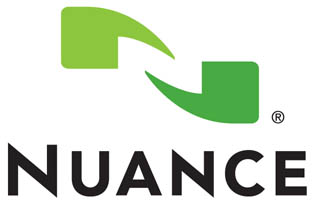A Scottish nurse who contracted Ebola in Sierra Leone last year is in a “serious condition” after being readmitted to an isolation unit in London.
NHS Greater Glasgow and Clyde confirmed that the virus is still present in Pauline Cafferkey’s body after being left over from the original infection.
She is not thought to be contagious.
The 39-year-old has been flown back to the isolation unit at the Royal Free Hospital in London.
Bodily tissues can harbour the Ebola infection months after the person appears to have fully recovered.
Ms Cafferkey, from Cambuslang in South Lanarkshire, spent almost a month in the unit at the beginning of the year after contracting the virus in December 2014.
NHS Greater Glasgow and Clyde (NHSGGC) said she had been admitted to the Queen Elizabeth University Hospital in Glasgow on Tuesday after feeling unwell and was treated in its infectious diseases unit.
She was then transferred to the Royal Free Hospital in the early hours of Friday morning due to an “unusual late complication” in her illness.
Dr Emilia Crighton, NHSGGC director of public health, said: “Pauline’s condition is a complication of a previous infection with the Ebola virus.
“The risk to the public is very low. In line with normal procedures in cases such as this, we have identified a small number of close contacts of Pauline’s that we will be following up as a precaution.”
Government sources have described her transfer to the specialist unit as a “highly precautionary process”.
Background by Stuart Nicolson,
Colleagues who worked with her have spoken of Ms Cafferkey’s dedication and enthusiasm for her role at the Ebola Treatment Centre in Kerry Town.
And in extracts from her diary published by the Scotsman newspaper, she described how the work she was doing had quickly come to feel like a “normal part of life”.
She wrote: “My nice community nursing job in Blantyre is far removed from this but at the moment this seems a lot more real. The dreams that I do remember always seem to have an Ebola theme, it seems to be all consuming.”
During the third week of her diary, she described “an awful shift” during which she had to tell a young boy, whose father had died from Ebola, that the virus had also killed his mother and sister.
“His mother had seen her daughter die in the bed across from her that morning and she died a few hours later,” she wrote.
Dr Ben Neuman, a virologist from the University of Reading, told The Health Magazine Radio’s Good Morning Scotland programme that the outlook for Ms Cafferkey was good and it was unlikely the virus remained infectious.
He said: “Once the virus is removed from the blood once, it tends to retreat into the hard-to-access components of the body. It’ll hide in places like the back of your eye or breast milk.”
He said the effects of the virus on the body could last for up to two years, although it was difficult to know how long it could actually persist.
He added: “The nice news here is that she’s beaten the virus once so she can probably beat it again.
“The odds are that she has actually inherited a lucky set of genes and these are probably what protected her the first time and probably what will keep her safe the second time regardless of any treatment. The outlook’s good.”
Ebola is passed on through bodily fluids. It is not transmitted through casual contact.
Analysis by James Gallagher, health ,
Finding the virus in Ebola survivors months after recovering is not unheard of.
Previous outbreaks have shown the virus can survive in semen and it was found in the eye of a US doctor two months after recovering.
This can pose health problems for the patient, but is there a risk of spreading the virus?
Men are advised to use condoms indefinitely until more is known.
But there are now so many survivors in West Africa – around 13,000 – that if there was a major risk then we would know about it.
Liberia did have a mini Ebola flare-up after going more than 40 days without a case.
Ebola virus persisting in survivors is one possible explanation.
Experts say there will have to be monitoring for Ebola flare-ups for years after the epidemic is over.
What are the risks of Ebola recurring?
Last week Ms Cafferkey, who works at the Blantyre Health Centre, was in London receiving an award at the Pride of Britain ceremony which recognised the risks aid workers took with their own health.
There are not thought to be any concerns about contact she had with people at the event but health officials in Scotland are focusing on who she had seen since her return home.
Ms Cafferkey contracted Ebola while working as a volunteer with Save the Children at a treatment centre in Kerry Town, in Sierra Leone.
She was diagnosed on 29 December last year, after returning to Glasgow via London.
Her temperature had been tested seven times before she flew from Heathrow to Glasgow and she was cleared to travel, before later falling ill.
She was placed in an isolation unit at Glasgow’s Gartnavel Hospital after becoming feverish, before being transferred by an RAF Hercules plane to London on 30 December.
She was then transferred to the specialist isolation unit at the Royal Free.
After a few days Ms Cafferkey’s condition began to deteriorate, with the hospital announcing she had become critically ill on 4 January.
After leaving hospital later the same month, Ms Cafferkey said she was “very happy to be alive” and was looking forward to returning to “normal life”.
An investigation by Save the Children later concluded that the nurse had probably caught Ebola by wearing a visor instead of goggles while treating patients.
- Symptoms include high fever, bleeding and central nervous system damage
- Spread by body fluids, such as blood and saliva
- Fatality rate can reach 90% – but current outbreak has mortality rate of about 55%
- Incubation period is two to 21 days
- There is no proven vaccine or cure
- Supportive care such as rehydrating patients who have diarrhoea and vomiting can help recovery
- Fruit bats, a delicacy for some West Africans, are considered to be virus’s natural host
At the time, Dr Michael Jacobs, from the Royal Free’s infectious diseases team, said Ms Cafferkey had completely recovered and was “not infectious in any way”.
NHS Lanarkshire said she had begun a phased return to work in mid-March, and had last been at work on 1 October.
Consultant in Public Health David Cromie said: “Pauline was well while at work and there is no wider public health risk for patients treated by her or her staff colleagues.
“In line with normal procedures in cases such as this, a small number of close contacts of Pauline have been identified and will be followed up as a precaution.
“Together with Pauline’s colleagues, our thoughts are with Pauline and we wish her a full speedy recovery.”
Deadliest outbreak
- West Africa’s Ebola outbreak was first identified in March 2014 – within hours doctors set up field hospitals to treat the sick.
- Aid workers from countries across the world, including the UK, Germany, France, Italy, the US and Spain, volunteered to help.
- More than 11,000 people have died from the virus since the epidemic erupted.
Why did we lose control of the Ebola virus in 2014?
Ms Cafferkey had visited Mossneuk Primary School in East Kilbride the day before she fell ill, where she gave a presentation at an assembly to thank the school for raising money.
Health experts have offered reassurance to parents, stressing that Ebola cannot be spread through ordinary social contact.
The World Health Organisation admits not much is known about the long-term implications after having Ebola.
Some survivors of the virus have had eye and joint problems, as well as ongoing fatigue.





